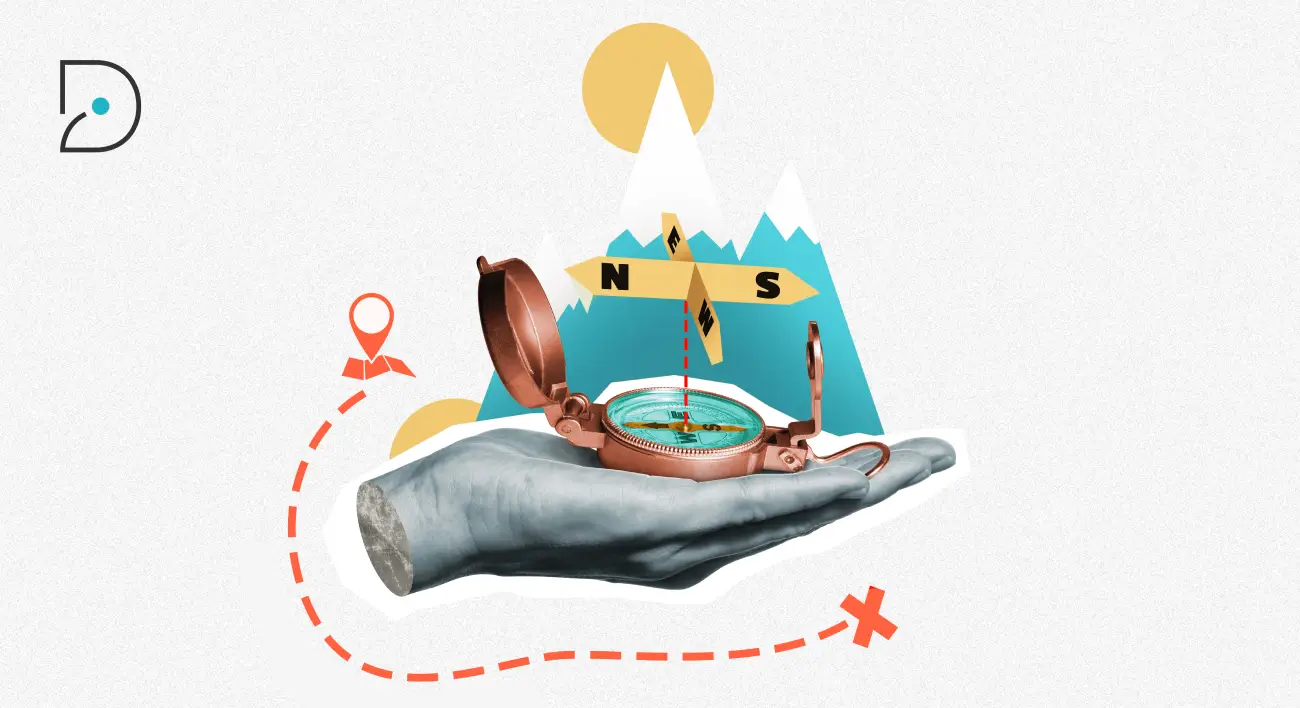

Do nudges have a place in LMS?
Since the 2010s and the best seller Nudge by Thaler and Sunstein, the Nudges were as successful as the sales of this book. Whether you are HR, responsible Learning or engineer pedagogical, you may have heard this word in passing. A recent scientific article seriously calls their effectiveness into question. What do you think and what to do if you are on the ground?
What are nudges? Are they really effective?
The nudges, they are shifts subtle and inexpensive in tools or the environment that encourage users to adopt certain behaviors without restricting their choices or offering them material rewards. Classic examples range from Sticker in the shape of a fly stuck in urinals to reduce splashes, to fake 3D pedestrian crossings to encourage motorists to slow down, to reminder letters from public administrations that describe the best practices of your co-citizens (“9 out of 10 citizens pay their taxes on time”).
Because of their simplicity And of their low cost, they have gradually found their place in many areas (health, security, personal finance, climate protection, etc.) and in particular the one that interests us: training. Several researchers have studied The impact of nudges that they designed for their learners. We can cite Clark et al.. (2019) who have raised Training completion rates and learning performance in requesting For learners to fix their own completion goal. Lin-Siegler et al. (2016) improved student motivation and grades by Inserting in their formation of information on difficulties encountered and failings great scientists.
But A recent study Come seriously Questioning these results. Using sophisticated statistical methods, this meta-analysis showed that much of the positive effect of Nudges was explained by the publication bias. In other words: the positive results of Nudges were in a way “swollen” by the fashion effect and are in fact much more modest than initially thought. Voices are now being raised to put back inherently The Nudges in question: these would be cheap interventions, which monopolize budgets and resources at the expense of interventions that are more maximalist... and more effective.
Should nudges be buried? What is the point of integrating them into our LMS?
First, it should be remembered that Not all nudges are created equal. In fact, this is what the authors of the meta-analysis : there is a big heterogeneity between the studies they analyzed. Thus, some nudges are very efficient (the flies in the urinals have reduced the interventions of maintenance personnel in equipped toilets by 80%) and others much less (the nutri-score has not yet phas proven its ability to guide consumers towards healthier food).
Second, nudges will not have the same effectiveness depending on their nature and the context in which they are deployed. Hansen and Jespersen separate nudges into 2 categories:
- Type 1 nudges are based on automatic user behaviors without engaging the user in conscious or elaborate thinking : the 3D pedestrian crossing is one of them, because they require our prudence and our reflexes. Another example could be to automatically and automatically start the learner's new learning session by quickly reviewing an exercise they've done in the past (instead of waiting for them to do it themselves).
- Conversely, type 2 nudges, such as the nutri-score or the definition of a completion objective, are based on natural trends Of the human being (the social desirability for example) for engage In a reflection conscious and Deliberate (for example: pay taxes after reading that 9 out of 10 citizens pay them on time).
(Types 1 and type 2 refer to decision-making systems 1 and system 2, popularized by Kahneman, whose book I invite you to read as well as Noise more recently). These two types each have pros and cons.
What nudges should you use in your LMS?
Les LMS can integrate Nudges (even so often, they're not named as such!) and it is therefore important to look carefully at its functionalities to see what can be done.
The nudges 1 are particularly adapted in contexts where the learner is in cognitive overload (i.e. where it has to process a lot of information at the same time). For example, some LMS offer custom revision modules that are automatically generated and offered to the learner when he comes back on his training: the advantage is that he does not have to make an effort to review what he has already seen. But his effect is contextual : If you remove this module, it is unlikely that learners will continue to review the content they have already seen by themselves.
The nudges type 2 gradually induce lasting changes of behavior, likely to continue if the Nudge was about to be suppressed. For example, messages that de-dramatize The error when the learner makes a mistake has a immediate effect (the negative emotion experienced as a result of the error decreases) and also in the longer term: the learner no longer interprets the error as the mark of a failure, but of a learning in progress. On the other hand, they require the learner to have cognitive resources available to process it: quietly, reading a letter, it works, but in an exercise under time pressure, learners are unlikely to pay attention to it! It is therefore important that the LMS that you choose does not overload the learner with information to preserve the cognitive resources of your learners.
Ideally, use Nudges whose effectiveness has been tested in real life situations. This article scientist describes several of them, which are specifically useful for training. If you need to create your own Nudge, take a good look at these 2 parameters:
- The context of your training: when you want to deploy your nudge, Do your learners have a lot of information to process in parallel?
- If yes, avoid type 2 nudges like ”The 10% of the most successful salespeople in our company have taken this training” : if your learners arrive on your LMS because they receive 1 invitation per week, that their home page is cluttered with dozens of courses, it is unlikely that they will notice this Nudge. Instead, give preference to Nudges type 1, simpler, such as accentuating the visual enhancement of the training that you want to push (and the withdrawal of other formations).
- From your objective: do you want to change the sustainable behavior of your learners?
- If yes, go to the Nudges type 2. Example: Learners only watch videos once, regardless of their level of understanding of what they were presented with. A simple prompt before the video “When you don't understand something in the video, pause it or rewatch the part in question.” a positively changed user behavior.
There you go, we hope that this quick overview of Nudges will have inspired you! If you decide to embark on the adventure of Nudge, we can only recommend Diagnose, Test, Adapt approach described in the article on Nudges of our partners, the agency's researchers Cog'X to make sure you're going in the right direction. It's up to you to play and reveal the powers of Nudge !

Resources to go further:
- The article from our partner Cog'X: A boost or a kick in the water: can nudge transform behavior?
- A scientific article on nudges in education
- A scientific article on Nudges in training
Make an appointment directly with our eLearning experts for a demo or simply more information.












